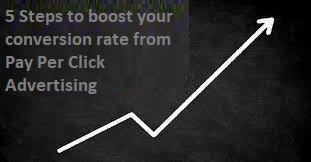Compared with the ineffective crap shoot that is traditional
advertising, there’s no better way to get targeted traffic than through
pay-for-performance keyword advertising in search engines. If you’re
not clear on what pay per click ads are, those are the sponsored links
that show up when you perform a web search in Google, Yahoo and other
search engines.
While more targeted than offline advertising or banner ads, it’s
certainly possible to throw away a lot of cash with pay per click. The
way to do that is to fail to think strategically about where you send
people who click on your ads.
The goal of pay per click advertising is to get in front of searchers
who are looking specifically for what you have to offer. This takes
careful keyword research, strategic bidding, and compelling ad copy just to get the click.
The problem is, that’s where most people stop.
They make the mistake of sending that
targeted traffic to the home page of their website or blog. Even worse,
they make no attempt to establish a relationship with those that don’t
buy, so as to boost conversion rates for every dollar spent.
So, if you’re selling products or services, it makes sense to make sales and build your fan club
at the same time. Here’s how to boost your conversion rates from any
pay per click campaign while also boosting your subscriber numbers.
- The first thing to do is build a ultra-specific page to send the
search traffic to, called a landing page. Depending on the variety of
key words you are bidding on, you may even build several landing pages
that each narrowly address the specific needs of that searcher. - When I say “searchers,” I mean searchers. Do not
participate in contextual advertising programs on publisher sites. I
think we’ve all seen enough AdSense spam to understand part of the
reasoning here. But even on reputable sites, contextual advertising
brings too many “curiosity clicks” that kill your return on investment.
You want people who are actively looking for what you are offering. You can choose to opt-out of non-search traffic with both Google and Yahoo. - The landing page does not sell your product or service. This is key.
You instead offer a quality free resource –- a mini-course, ebook,
teleseminar, or other type of tutorial that is directly related to what
you are ultimately selling. By teaching people about the subject matter
of your product or service, you are actually engaging in a highly
effective form of selling, all while establishing a relationship. - Whatever your free offer, it must be delivered by an email or RSS
autoresponder that allows you to stay in contact with the prospect. - You should explicitly inform your prospects that in addition to the
free resource you are offering, they will also be receiving your email
newsletter / blog updates. Make sure you make this part of your offer
as enticing as possible. You’re delivering valuable, relevant content
on a regular basis, right?
And there you have it. You’ll likely make some sales right away, but
your real profits will come from the people who warm up to your offer
thanks to the ongoing value you provide with your blog content.
This technique is by no means new. But it’s shocking how many people
still don’t use it, as they waste good money sending targeted traffic
to a home page that is not laser-focused, and also fail to offer true
value to the searcher that results in a relationship.
You don’t propose marriage before you get a first date. And you
likewise shouldn’t expect people to just automatically jump at the
chance to give you money upon arriving at your home page.
Of course, each of the five steps above could use some elaboration,
and I’ll be offering tips in the future that can help boost landing page
conversions even for those who have been using this method for years.
Also, the key word research and bidding process in Google AdWords (the
largest pay per click program) is a topic in itself that requires
mastery to be effective.









